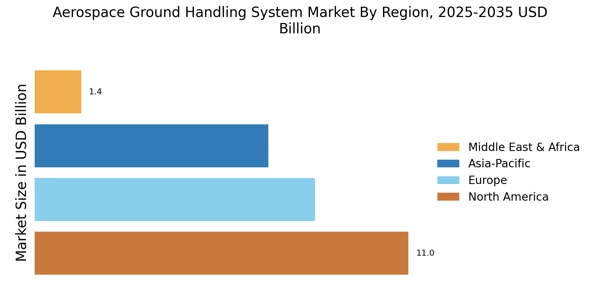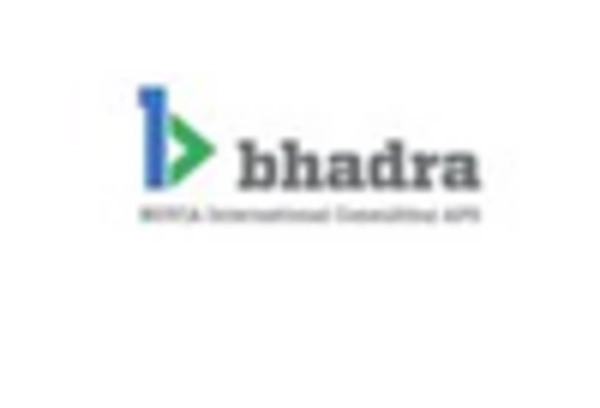Technological Innovations
Technological advancements are significantly shaping the Aerospace Ground Handling System Market. Innovations such as automated baggage handling systems, real-time tracking technologies, and advanced communication systems are enhancing operational efficiency and safety. The integration of artificial intelligence and machine learning into ground handling operations is streamlining processes, reducing turnaround times, and minimizing human error. For instance, the implementation of automated guided vehicles (AGVs) for baggage transport is gaining traction, potentially reducing labor costs and improving service speed. As the industry embraces these technological innovations, the Aerospace Ground Handling System Market is likely to witness increased competitiveness and improved service delivery, ultimately benefiting airlines and passengers alike.
Increasing Air Traffic Demand
The Aerospace Ground Handling System Market is experiencing a notable surge in demand due to the increasing volume of air traffic. As more passengers and cargo are transported by air, the need for efficient ground handling systems becomes paramount. According to recent data, air traffic is projected to grow at a compound annual growth rate of approximately 4.5% over the next decade. This growth necessitates the expansion and modernization of ground handling services to accommodate larger aircraft and higher passenger numbers. Consequently, stakeholders in the Aerospace Ground Handling System Market are investing in advanced technologies and infrastructure to enhance operational efficiency and safety. The rising demand for air travel is likely to drive innovations in ground handling processes, thereby creating lucrative opportunities for market players.
Collaborative Partnerships and Alliances
Collaborative partnerships and alliances are emerging as a vital driver in the Aerospace Ground Handling System Market. Companies are increasingly recognizing the benefits of strategic collaborations to enhance service offerings and operational capabilities. By forming alliances with technology providers, airlines, and logistics companies, ground handling service providers can leverage shared resources and expertise. This collaborative approach enables the development of integrated solutions that improve efficiency and customer satisfaction. For instance, partnerships focused on data sharing and technology integration can lead to more streamlined operations and better resource management. As the Aerospace Ground Handling System Market continues to evolve, these partnerships are likely to play a crucial role in driving innovation and competitiveness.
Sustainability and Environmental Concerns
Sustainability is becoming a critical focus within the Aerospace Ground Handling System Market. As environmental concerns rise, stakeholders are increasingly seeking eco-friendly solutions to minimize the carbon footprint of ground operations. The adoption of electric ground support equipment and the implementation of energy-efficient practices are gaining momentum. According to industry reports, the market for electric ground support equipment is expected to grow significantly, driven by the need for sustainable practices in aviation. This shift towards sustainability not only aligns with global environmental goals but also enhances the reputation of airlines and ground handling service providers. Consequently, the Aerospace Ground Handling System Market is likely to evolve, with a greater emphasis on sustainable technologies and practices.
Regulatory Compliance and Safety Standards
The Aerospace Ground Handling System Market is heavily influenced by stringent regulatory compliance and safety standards. Governments and aviation authorities worldwide are enforcing regulations to ensure the safety and security of ground operations. Compliance with these regulations often necessitates the adoption of advanced ground handling systems that meet specific safety criteria. For example, the International Civil Aviation Organization (ICAO) has established guidelines that ground handling service providers must adhere to, which may include training requirements and equipment standards. As a result, companies in the Aerospace Ground Handling System Market are compelled to invest in modern technologies and training programs to maintain compliance, thereby driving market growth and enhancing overall safety in ground operations.


















Leave a Comment